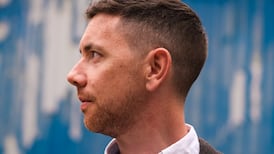Memory is suddenly in the air. Last Thursday in The Irish Times Siobhán Long discussed the Clare Memory Orchestra with its founder, composer and guitarist Dave Flynn. And also on Thursday, in the Guardian, Daniel J Levitin mused on the evolutionary origins of musical memory, with a special emphasis on extraordinary feats of memory that some musicians have demonstrated. His article was prompted by the fact that the Aurora Orchestra will perform Beethoven's Pastoral Symphony and a new work by Anna Meredith from memory at the BBC Proms on August 2nd.
Yehudi Menuhin liked to tell the story of an unexpected performance during a violin lesson he had as a boy when he was studying with the Romanian composer, violinist, pianist and conductor George Enescu. The 1927 lesson was interrupted by another composer, Ravel, who wanted to run through his new violin sonata, which he needed to play for his publisher.
Enescu and Ravel played the work from the manuscript, and Enescu asked if they could repeat the rapid-fire, moto perpetuo finale, as it was a bit tricky. He then turned away from the music, and played the piece entirely from memory.
Menuhin said that whenever Enescu accompanied him at lessons, he never played from sheet music. And Irish violinist Hugh Maguire, who studied with Enescu in the late 1940s, told me the same thing. No matter what he played with Enescu, the printed music was never required. Enescu could also play whole operas from memory and almost everything by Bach: "almost", because a collection he was given as a gift in his youth had a few volumes missing. And the Irish pianist Charles Lynch is said to have been able to play numerous operas by Wagner from memory.
It was Liszt who, in the middle of the 19th century, established the practice of pianists performing from memory. Other keyboard players, harpsichordists and organists, still typically play from music, as do chamber ensembles. There are, however, a number of string quartets that follow Liszt’s precedent. I’ve been at performances by the legendary Smetana Quartet and the Zehetmair Quartet where the space between the players was entirely empty rather than filled with music stands.
Opera singers, of course, perform from memory, and opera choruses, too. And the members of the Rundfunkchor Berlin sang Bach's St John Passion from memory (and sometimes lying on the ground) in Peter Sellars's concert staging of the work for the Berlin Philharmonic Orchestra under Simon Rattle last year.
You might have expected memory to have been a primary concern for the performers of the Kirkos Ensemble in their Blackout concerts at the Royal Irish Academy of Music over the past three months. But the closest to full darkness for an instrumental solo in the series came last weekend, when David Adams played Froberger's Meditation faite sur ma mort future, an extraordinary downbeat Allemande in D major for harpsichord.
The shift to the sound-world of a work from the middle of the 17th century was startling in the context of a series that has otherwise stayed in the 20th and 21st centuries. The evening's major piece was Sebastian Adams's new Harry Patch, which was written for the occasion, taking into account the darkness, the players and the setting. Adams also factored in the preoccupations of the Blackout series as a whole, so that the piece functioned as a completion of the journey.
The major work of the opening concert was Messiaen's Quartet for the end of time, written in a second World War prisoner of war camp, and Harry Patch is named after the longest surviving combatant of the first World War.Adams's piece is a quartet – for flute, horn, cello and piano – and pays musical tribute to Messiaen's quartet. Unlike the Messiaen it uses offstage instruments in theatrical ways: the horn plays a whole movement in different offstage positions, and there's a pre-recorded music heard from different distances, almost down to the threshold of audibility. But there do not appear to be any angels or any paradise in Adams's conception. He focuses on the ugliness – and also, perhaps, the inevitability – of war, as suggested by the final, extended repetition of a bare octave, where he seems to ask: will this never end?
Dún Laoghaire recitals
The most recent recitals in the organ series at St Michael's, Dún Laoghaire, were of a high order. John Scott (Sunday 12th), and Colm Carey (Sunday 19th) offered programmes that focused on the German baroque, with the excursion closest to our own times calculated for light relief: Ad Wammes's Toccata Chromatica (Echoes of Sweelinck) of 2005 from Scott, and Anton Heiller's Variations on Nun komm der Heiden Heiland from 1985 from Carey.
Organists have the longest repertoire of original works of any instrumentalists, and many of them like to use the freedom this gives them to weave patterns of association and connection through their programmes, as both Scott and Carey chose to do, with Carey taking a favourite route of following connections with Bach.
In terms of musical style, though, the two players could hardly have been more different. Scott, who also played Scheidt, Sweelinck, Buxtehude and Bach, delighted in his fabulously fluent fingers and often seemed to be using them to take a minimally invasive interpretative approach, as if he wanted the music to sound as if it were just happening.
Carey, whose repertoire also covered Bach, Homilius, Mendelssohn and Krebs, showed great concern with articulation and clarity. The lines were carefully sculpted, the pedals assertive, the impression being that he wanted each part to stand out clearly from every other part. It was good to be reminded how rewarding such diverse approaches to the organ can be.
- mdervan@irishtimes.com










